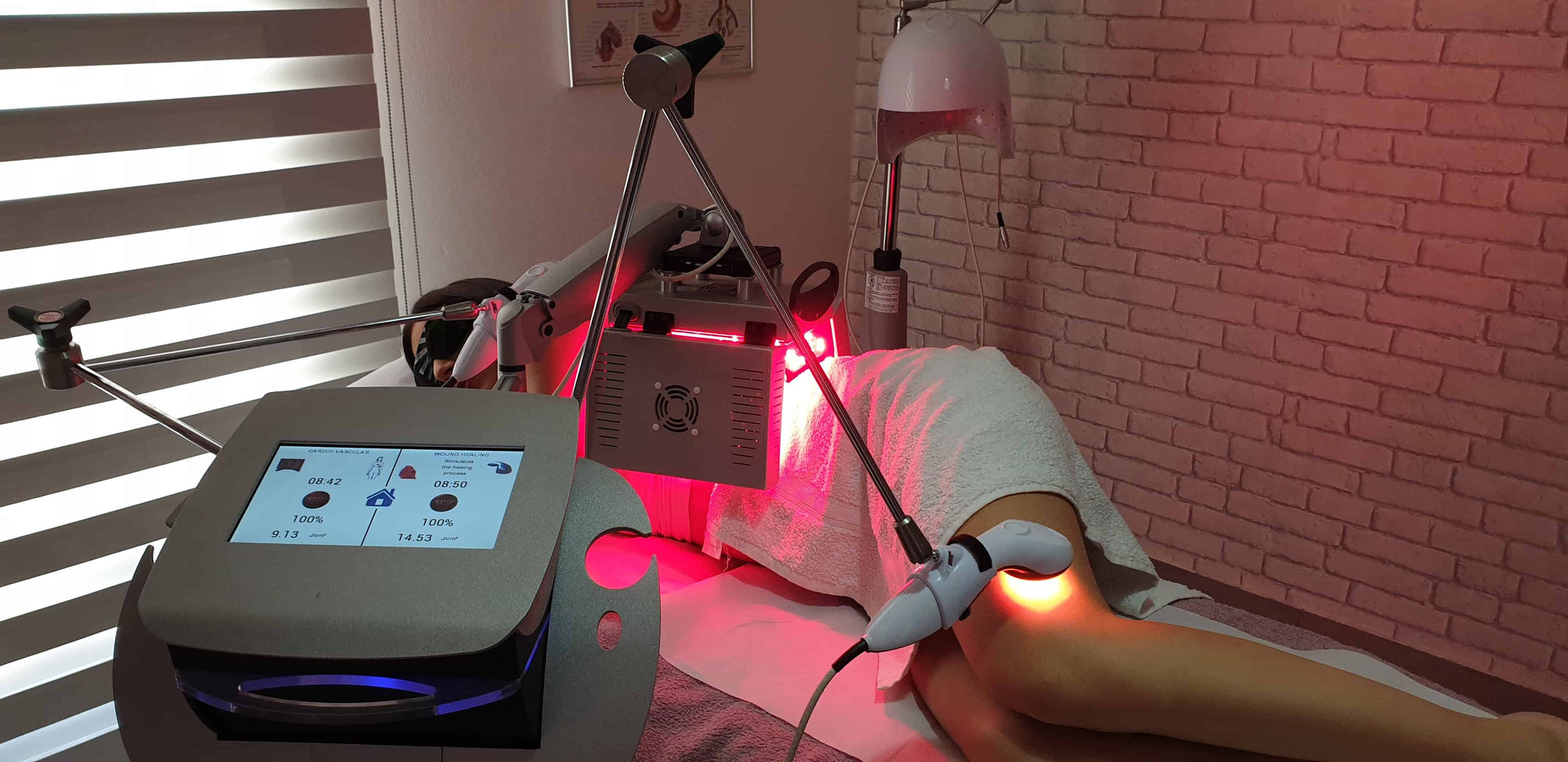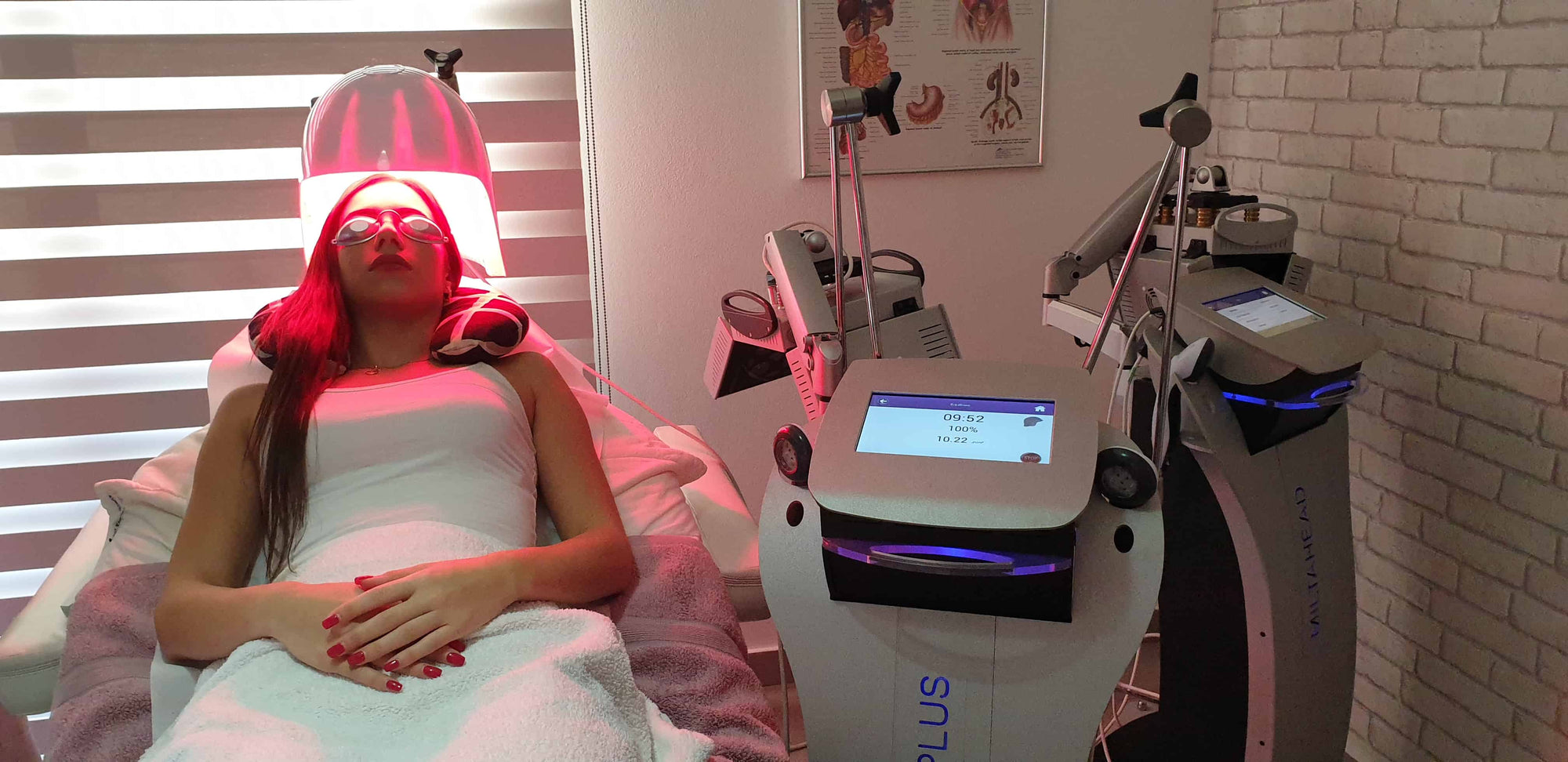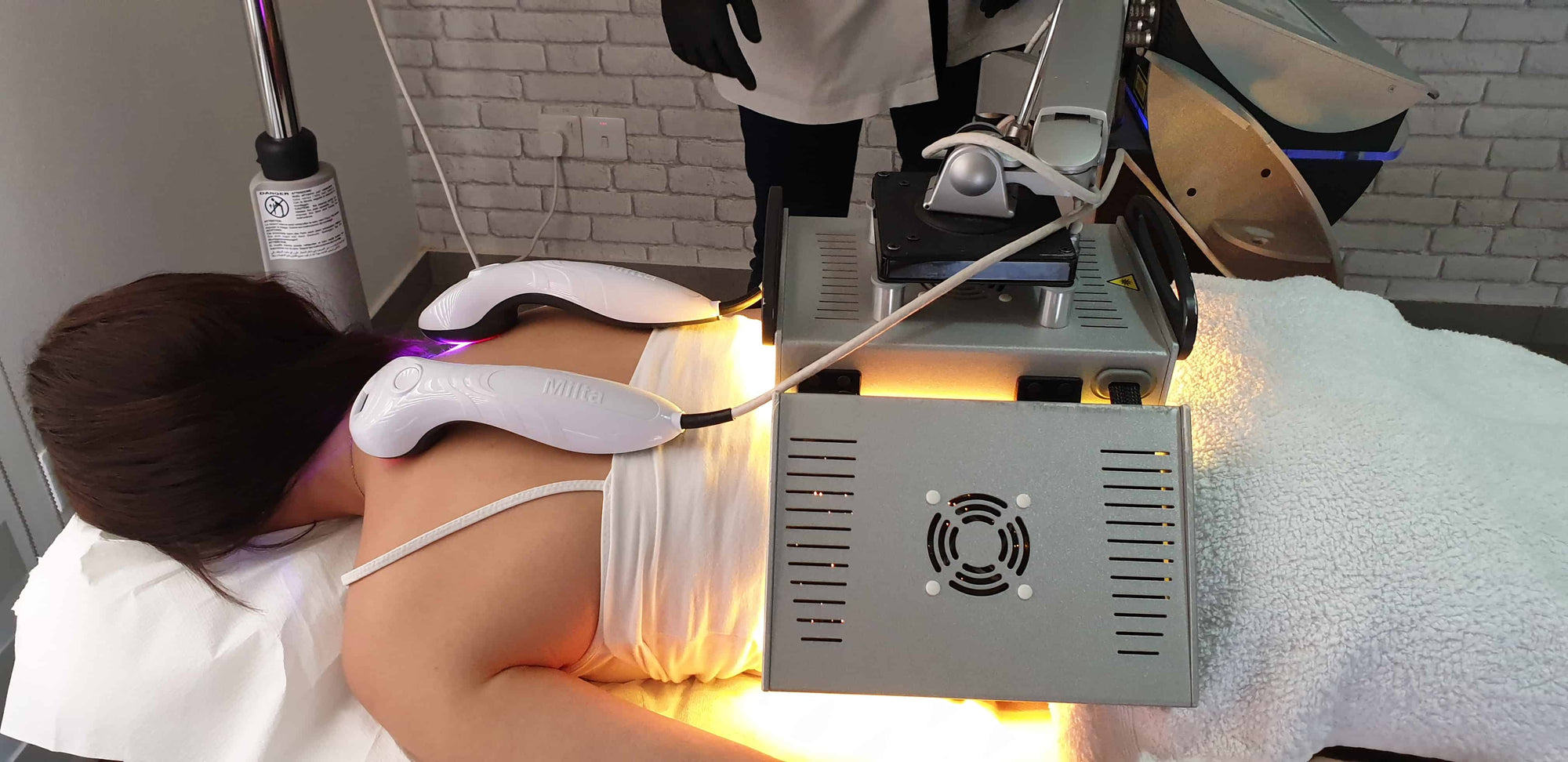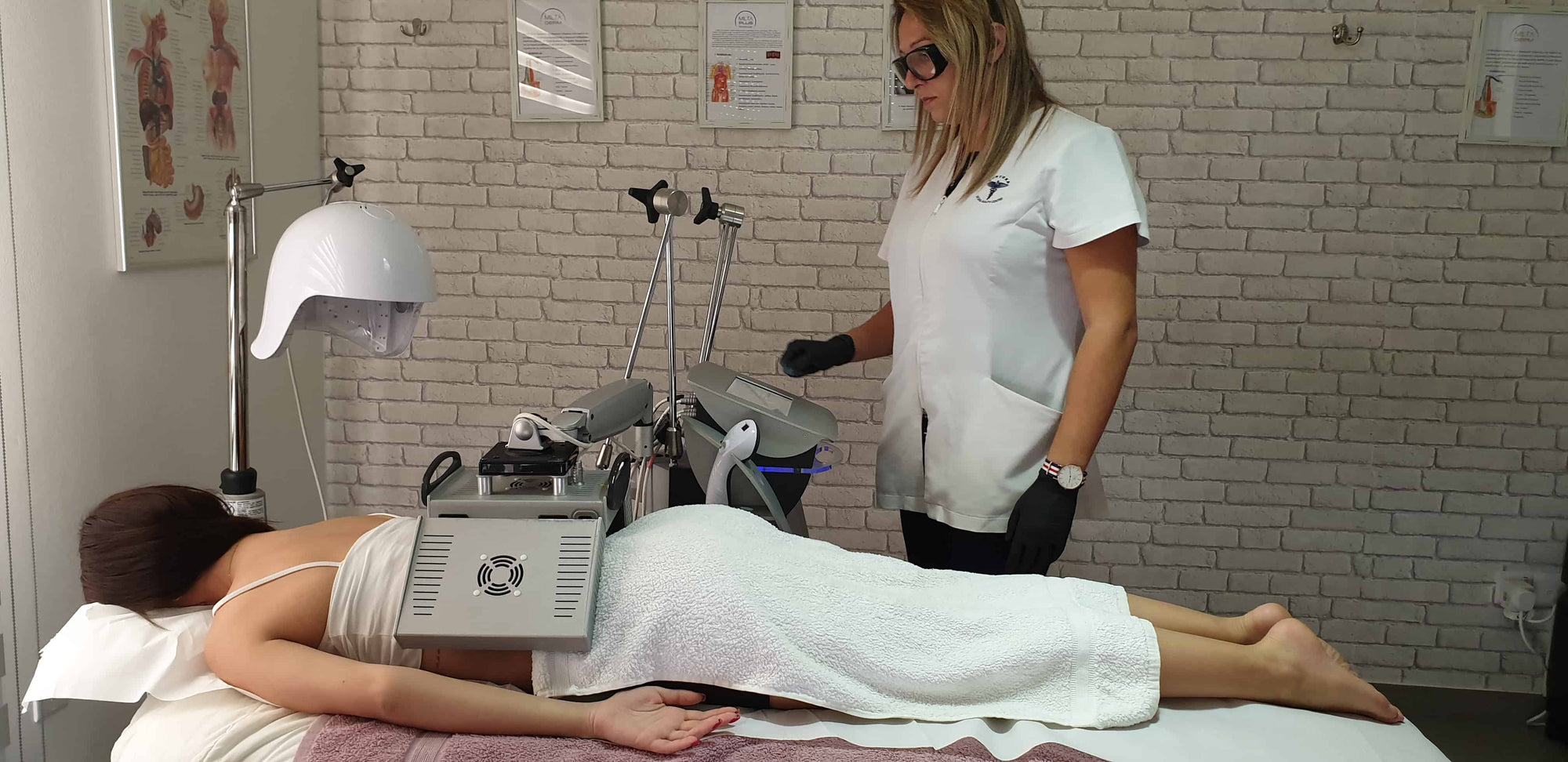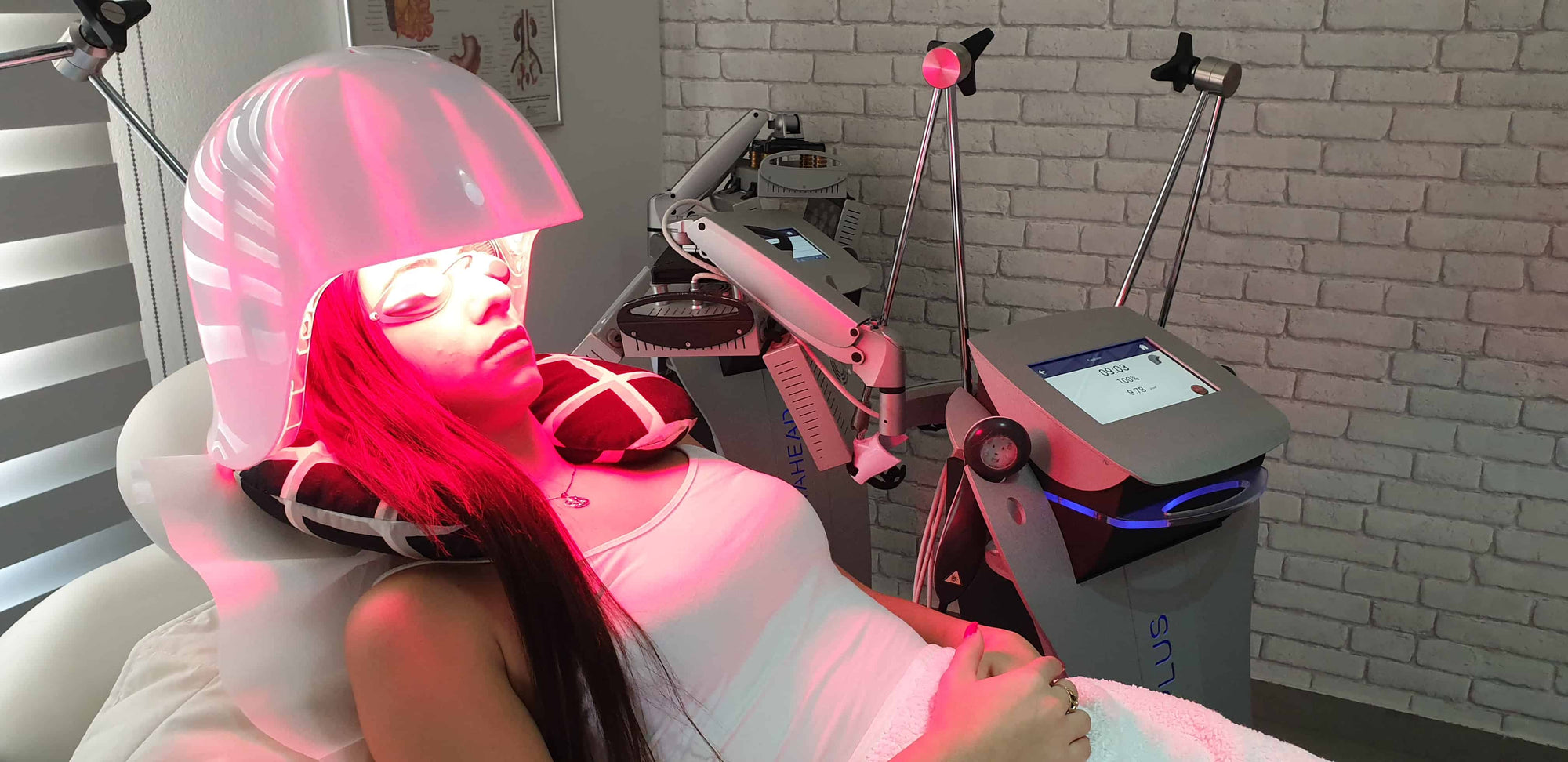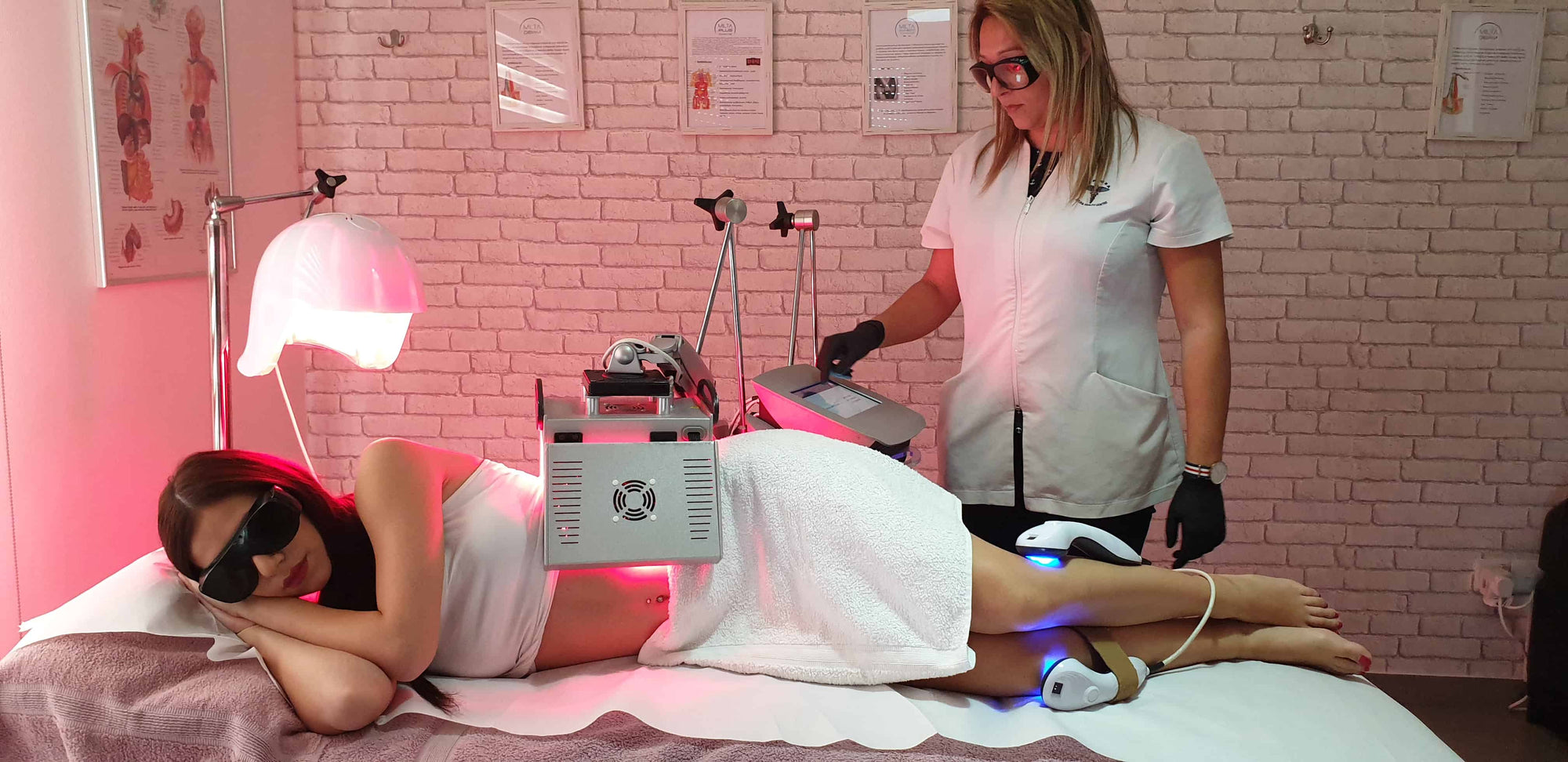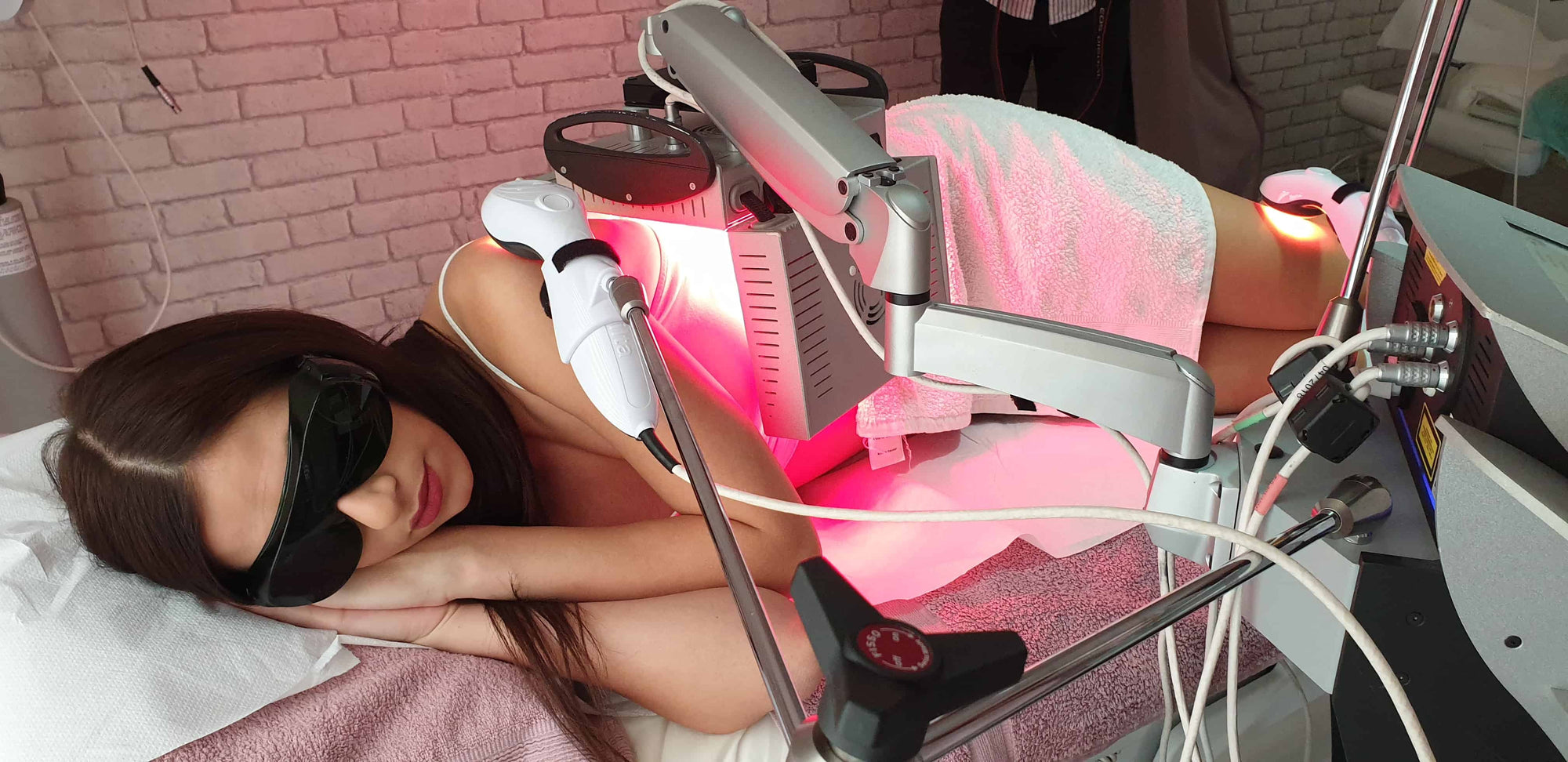What is Photobiomodulation?
Photobiomodulation therapy is defined as the utilization of non-ionizing electromagnetic energy to trigger photochemical changes within cellular structures that are receptive to photons. Mitochondria is particularly receptive to this process. At the cellular level, visible red and near infrared light (NIR) energy are absorbed by mitochondria, which perform the function of producing cellular energy called “ATP”. The key to this entire process is a mitochondrial enzyme called cytochrome oxidase c, a chromophore, which accepts photonic energy of specific wavelengths when functioning below par.
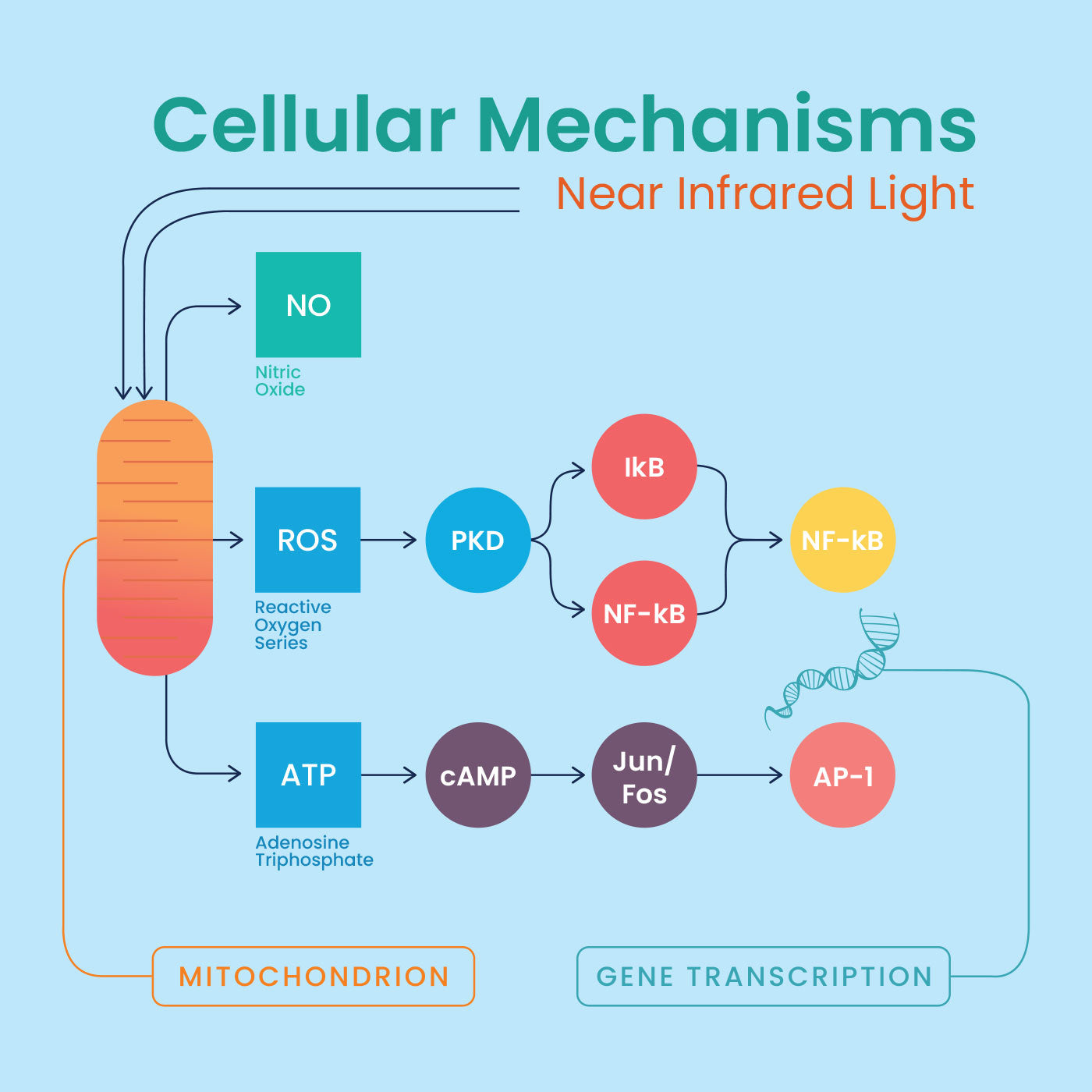
What are the Mechanisms of Photobiomodulation?
The current and widely accepted proposal is that low level visible red to near infrared light (NIR) energy is absorbed by mitochondria and converted into ATP for cellular use. In addition, the process creates mild oxidants (ROS), which leads to gene transcription and then to cellular repair and healing. The process also unclogs the chain that has been clogged by nitric oxide (NO).[1] The nitric oxide is then released back into the system. Nitric oxide is a molecule that our body produces to help its 50 trillion cells communicate with each other. This communication happens by transmission of signals throughout the entire body. Additionally, nitric oxide helps to dilate the blood vessels and improve blood circulation.
Photobiology is the study of the effects of non-ionizing radiation on biological systems. The biological effect varies with the wavelength region of the radiation. The radiation is absorbed by molecules in skin such as DNA, protein or certain drugs. The molecules are changed chemically into products that initiate biochemical responses in the cells.

Effective and painless therapy
This synergy allows the MILTA to act at an unequal depth, which is inaccessible to conventional LEDs, thanks to the informational propagation of photon up to 13 cm in the soft tissues.
This advance is very effective, painless, athermic, non-invasive & without any side effects which has been the subject of many scientific works since the 1970s. In order to make the practitioner’s work easier, MILTA has developed preset programs which allow them to choose the desired therapeutic action.
Characteristics of
Milta emissions
The NPCL (Nano-Pulsed Cold Laser) emissions in coherent infrared light, at 905 nanometers
Non-coherent emissions, pulsed by trichromatic RGB CSM diodes (400 to 650 nm)
Continuous non-coherent infrared emissions monochromatic diodes at 905 nanometers
A constant circular magnetic field (200 millitesla) equivalent to the terrestrial magnetic field
The effect of the magnetic tunnel potentialities the light propagation
Led Phototherapy
The field of phototherapy is experiencing a recent boom thanks to the development of LED technology. This low-voltage light source creates an emission belonging to the visible and infrared spectrum. Protecting the skin covering: this cold light source presents no risk of irritation or burning. Non-invasive: This method has no possible side effects. It has also been shown that it increases the effects of other treatments. Biological innovations integrated with the device.
RED 625nm
Collagen production, Anti-inflammatory, Cell regeneration, Energizing, Anti-Aging, Hemoglobin synthesis.
ORANGE 600nm
Rejuvenation, Wrinkles, Toxification, Sagging skin, General pain, Muscle tone, Stimulates thyroid gland, Increases blood circulation.
YELLOW 580nm
Reduces superficial reddening, Sunburn, Motor and nervous stimulant, Digestive stimulator, Purifies liver/Gall bladder.
GREEN 528nm
Inflammation, Poor circulation, Skin sensitivity, Skin balancer, Sunburn, Itchiness.
BLUE 470nm
Relaxing, Anti-septic, Astringent, Insomnia, Anxiety, Acne, Inflammation, Irritation, Psoriasis.
INDIGO 445nm
Purifies tissue, Improves lymphatic system, Swelling, Anti-cellulite.
MAGENTA 420nm
Anti-cellulite, Slimming effect, Blood circulation, Cell oxygenation, Deep tissue stimulation.
PURPLE 400nm
Improves immunity, Reduces water retention, Fat cells/Fatty Liver, Appetite regulator, Heart arrhythmia, Potassium balance, Psoriasis/Dermatology.


